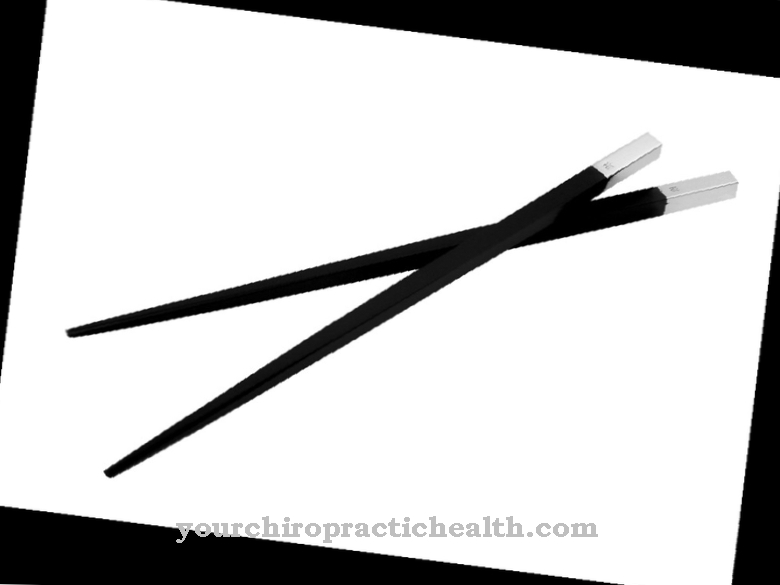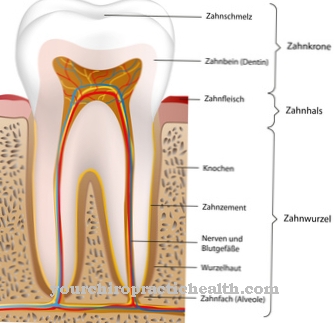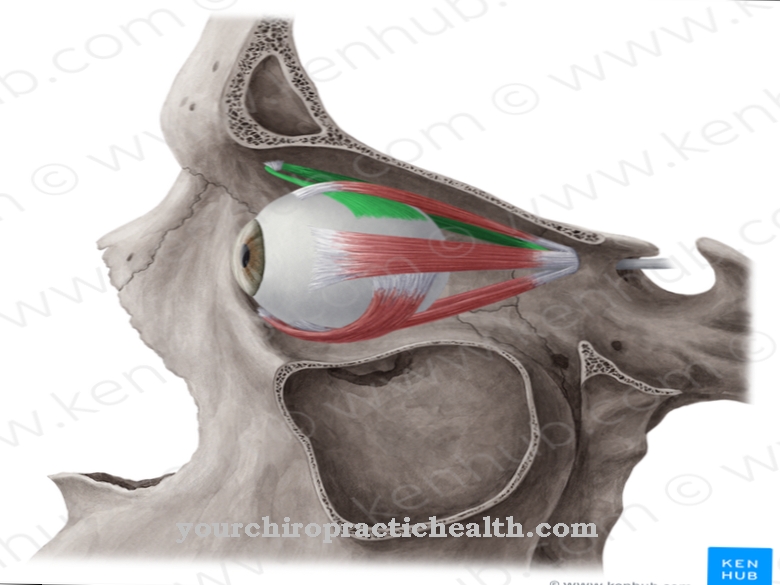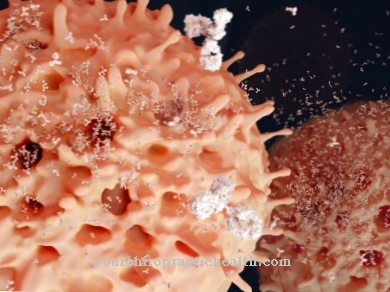The Brachial vein is an upper arm vein. It is located between the elbow and the armpit. Your job is to direct the blood back to the heart.
What is the brachial vein?
The brachial vein is a vein that is located in the upper arm of humans. Because of its position, it is also called upper arm- or Arm vein designated. It is created in pairs.
Because of this, it is in both arms. There are various superficial and deep veins in the upper arm. The brachial vein is assigned to the deep veins. The deep vein network begins in the palm of the hand and runs along the entire arm. The brachial vein has its origin in the elbow and extends to the armpit. It arises from the merging of several ulnar and radial veins.
All deep hand and amveins jointly transport venous blood from the back of the hand to the heart. Venous blood is oxygen-deficient blood. It consists of cells, blood plasma, messengers and nutrients that are transported to the heart. The blood flows through the veins in the arm from the hands to the body veins. These are large veins through which drugs can be supplied to the organism through an access. They are also used to draw blood for control purposes.
Anatomy & structure
The brachial vein is different in every person. In many people the blood conductor is double. The basilic vein runs in the back of the hand.
It flows further into the forearm to the crook of the elbow. In the forearm there are several smaller veins with the radial vein and the ulinar vein. All veins converge in the medial elbow. This is located on the side of the elbow facing the body. The brachial vein finds its origin in the elbow through the union of the veins. It runs along the upper arm cranial to the armpit. Its vertical course upwards is on the inside of the upper arm.
The brachial artery and the median nerve are located nearby. The brachial vein opens in the armpit. There is the axillary vein in the armpit, with which it joins. An exact transition between the two veins is not anatomically determined. The brachial vein is a deep arm vein. As a superficial vein, the basilic vein has a comparable course in the fatty tissue of the subcutaneous tissue.
Function & tasks
The task of the brachial vein is to transport the blood. The blood that comes from the hand and forearm is transported via the vein to the armpit of the person via the upper arm. From there it is fed to the body veins. Venous blood flows in the brachial vein. This is characterized by the fact that it is low in oxygen compared to arterial blood. Veins have a thinner vessel wall.
If it is damaged, the patient will experience less pain than if the arteries are damaged. For this reason, veins are preferred for taking blood or delivering drugs, hormones, messenger substances and nutrients during medical interventions. The blood and all substances transported with it reach the heart via the network of veins. Arterial blood flows away from the heart and venous blood flows to the heart. Ingested or supplied messenger substances are therefore quickly conducted to the heart via the veins. There they can develop their effect or are transported on to their destination via the arteries.
Since the brachial vein is a deep humerus, it cannot be seen, felt or touched from the outside. It flows between the muscles of the upper arm and is therefore well protected from external influences. If the superficial arm veins are damaged, the blood flow via the brachial vein is still sufficient. They reduce the risk of a total loss of blood circulation in the venous blood if the arm is damaged.
Diseases
Damage to the vessel wall of veins can cause bruising. Since the vessel wall is thin, even slight bruises, bruises or pressure can cause it to be damaged.
Damage often occurs, particularly when blood is drawn or medication is fed into the veins. These cause venous blood to leak out. This bleeding causes bruising. Applying pressure to these spots can be accompanied by a sensation of pain. The spots should be cooled immediately. This will stop the bleeding and prevent it from spreading.
In most cases the healing process starts very quickly and the bruises go away after a few days. If the bruises or the region become enlarged, a doctor should be consulted. In this case further bleeding will take place. These lead to the fact that the heart activity is increased. In particularly bad and persistent cases, this leads to stress on the heart and other organs. The risk of a heart attack increases. Other organs may not be adequately supplied and suffer symptoms of failure.
The cells in the body are transported through the blood. If a tumor forms in one place, there is a risk that tumor cells will detach. These can be transported to another location in a short time via the various blood conductors. This increases the risk that further metastases will develop and that cancer will spread.
























.jpg)



